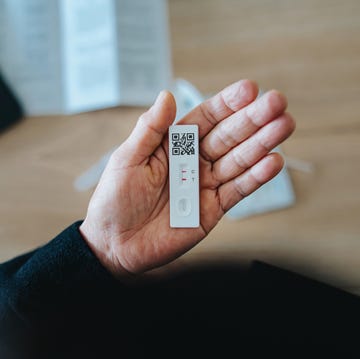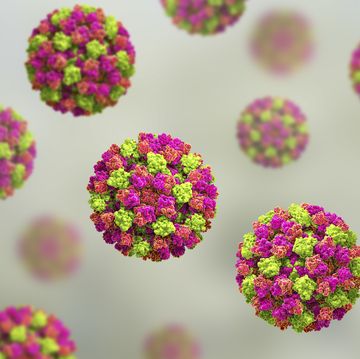- Professional golfer Justin Thomas shared an Instagram photo of his surgery scar after his dermatologist found melanoma on his left leg.
- Thomas, 26, is encouraging others to “go get checked,” since his cancerous mole was removed early enough “where there should be no problems going forward.”
- Melanoma is the deadliest form of skin cancer, but it can be cured if it is found early using the ABCDE system.
Professional golfer Justin Thomas is encouraging everyone to “go get checked” after his dermatologist found a small mole on his left leg that was in “the early stages of melanoma,” according to a recent Instagram post.
Thomas, 26, also shared a photo of the area where the melanoma was found, which is currently stitched up. “Luckily, we found it at a time where there should be no problems going forward. That being said, EVERYBODY GO GET CHECKED!! No harm can come from it and it’s the best way to catch anything before it becomes a serious issue,” he captioned the photo. “Especially for all the junior golfers (and other athletes) spending so much time in the sun.”
His fans and friends were shocked at the size of the scar and quick to offer their support. “That doesn’t look like a ‘very small mole’ removal,” one person wrote.
Melanoma, which forms in melanocytes (aka pigment-producing skin cells), is the rarest type of skin cancer. However, it’s also the deadliest and accounts for a “large majority” of skin cancer deaths, according to the American Cancer Society.
In fact, nearly 20 Americans die from melanoma every day, per the American Academy of Dermatology, since it’s more likely to spread to other parts of the body than basal or squamous cell carcinomas.
The upside: Melanoma can typically be cured if it’s caught and removed early, which is why it’s so important to see your dermatologist for an annual skin exam. You should also scan your skin regularly using the ABCDE system, which stands for the following:
- Asymmetrical: If you were to draw a line through the middle of a healthy mole, the left and right halves would look nearly identical. Cancerous moles may look lopsided.
- Irregular border: Moles that have no perimeter or uneven, scalloped, and notched borders are a red flag.
- Color changing: Melanoma moles have inconsistent color patterns. While they can present as jet black or dark brown spots, a lack of color (or patches of pink, white, or blue) is also a warning sign.
- Diameter: Moles or skin spots that are larger than a pea or pencil eraser should be evaluated ASAP.
- Evolving: Healthy moles will look the same over time. If they change in any way, bleed, itch, or crust, it’s time to see a doctor.
Melanoma can form on any part of your body, but most often presents on the neck and face. Men are more likely to find it on their chest and back, while women are more likely to identify it on their legs, the ACS says. However, Thomas did find his mole on one of his legs, which means you should scanning all parts of your body, regardless of your age or gender. (Still not sure what to look for? Check out these pictures of melanoma for a more visual representation, as well as these skin cancer signs that aren’t moles.)
If a skin spot looks unusual in any way, don’t hesitate to get it checked out immediately, and Thomas ended his post with that exact sentiment: “It is so important to make sure you’re monitoring your body—no matter how old you are or how much sunscreen you use. It really got my attention, and hoping it does the same to y’all!”
Like what you just read? You’ll love our magazine! Go here to subscribe. Don’t miss a thing by downloading Apple News here and following Prevention. Oh, and we’re on Instagram too.
Alisa Hrustic is the deputy editor at Prevention, where she leads the brand’s digital editorial strategy. She’s spent the last five years interviewing top medical experts, interpreting peer-reviewed studies, and reporting on health, nutrition, weight loss, and fitness trends for national brands like Women’s Health and Men’s Health. She spends most of her days diving into the latest wellness trends, writing and editing stories about health conditions, testing skincare products, and trying to understand the next greatest internet obsession.













